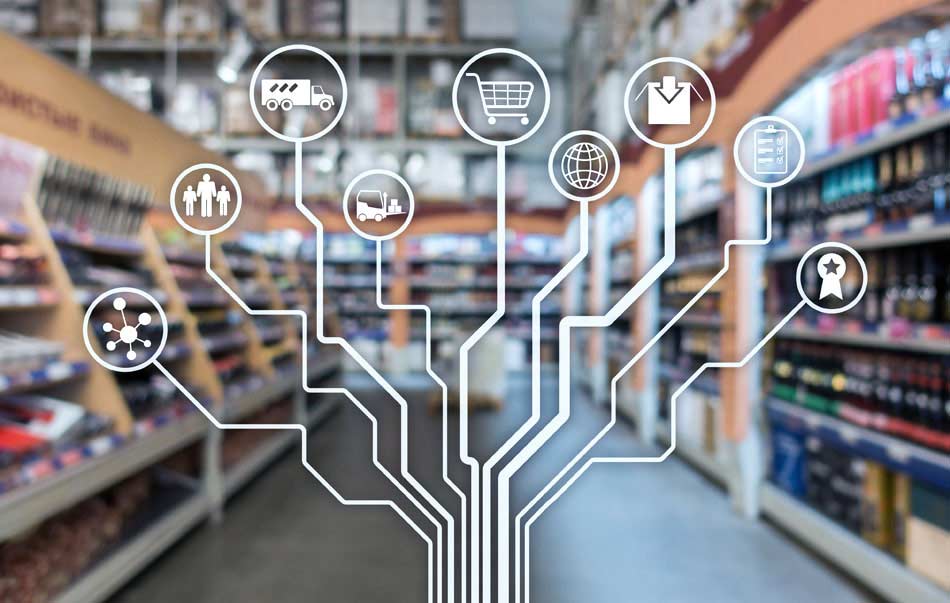This creates a huge opportunity for retailers who can get omnichannel right.
Omnichannel Strategy
The right strategy is the starting point for omnichannel success. This is because retail has historically operated in silos. And not much has changed today. From the store to the website, many retailers still keep their channels separate from one another when it comes to data, strategy and day-to-day operations.
Omnichannel requires a shift in strategic thinking. It changes the focus from the individual channels to the customer. Once retailers start to think in terms of the customer experience, an omnichannel strategy becomes necessary to deliver a frictionless offering across multiple channels.
Developing an effective omnichannel strategy starts with understanding what is already there. Retailers need to review their existing business, including their technical architecture, as well as consider the behaviors and buying habits of their customers alongside omnichannel best practices. This will then enable them to create a roadmap for omnichannel and implement the different systems and operational structures required to deliver it.
It’s not enough for a retailer to just connect their different channels together. A great omnichannel strategy also optimizes each channel in order to make the most of its individual strengths. As such, the entire retail business is made stronger because all the elements are working together.
Omnichannel Technology
The right technology is crucial to executing a successful omnichannel strategy.
When we talk about connecting retail channels in omnichannel we’re typically talking about using technology to do so. This enables data from across the business to be brought together in order to improve the customer experience.
Order management systems, Product Information Management (PIM) systems, inventory management systems and clienteling services are all examples of sources of information in retail that can be connected for a better buying experience.
For example, in the past information about the stock in an individual store would have been kept separate from information about stock levels in an e-commerce warehouse. Omnichannel technology connects that information together to give retailers a central view of all inventory across the business.
This information can then be used to fulfil orders in the best way for the customer. This might mean letting an online customer pick up their order from their nearby store because it has it in stock. It might mean shipping an online order from the store as it’s closer to the customer and therefore will arrive sooner.
It isn’t just the customer who benefits though. Retailers who embrace omnichannel have a better understanding of their business as a whole enabling them to improve and optimize it and save money in the process. Omnichannel also enables retailers to offer greater personalisation of the customer experience.
 The more your channels are linked together, the better you can understand your customer and offer them recommendations and services that are personalized to them.
The more your channels are linked together, the better you can understand your customer and offer them recommendations and services that are personalized to them.
Clienteling software is one way to incorporate personalisation into omnichannel. These solutions enable retailers to capture in-store and online interactions in a single customer profile that can be accessed by staff to tailor the buying experience.
It’s worth doing. McKinsey reported that retailers can achieve a 5-15% increase in revenue through personalisation across digital and physical channels.
A good omnichannel technology structure allows for ongoing optimisation and the addition of new channels. This is vital as even the last five years have shown how quickly new channels, such as TikTok, can emerge. Retailers need to have flexibility within their omnichannel technology set-up in order to evolve their offering over time. If you’re unable to easily add in new channels, then it’s not really omnichannel.
It also goes without saying that retailers need to make sure that all of their tech systems are up to scratch when building an omnichannel offering. A slow-loading website will cause customers to drop off even with a great omnichannel strategy in place.
Omnichannel Buying Experience
The buying experience is the customer-facing element of omnichannel retail.
Customers don’t think about shopping in the context of omnichannel or other retail terms. They don’t even think about separate channels. For them the retailer is one big ecosystem. They simply want to buy the things they want in the way that is most convenient to them at the time of purchase.
Omnichannel is how retailers can facilitate this. For the customer it’s seen as better customer service and a better buying experience. Remember that the customer doesn’t see the barriers you may have between different parts of your retail business.
They can’t understand why your store staff can’t check stock levels online and order something for them. They become frustrated when they can’t see what is available in-store before they visit. They don’t see why they can’t return something bought online in the store.
It’s important that retailers think through the different journeys customers may take and the variety of channels they may use.
A customer could go in-store first and then buy online later. They might see an ad online and shop through social media. They might watch a live commerce stream and order for delivery at home. They might buy online and collect from the store carpark.
All of these journeys, and the myriad of other possible combinations, need to be catered for in a friction-free way. Retailers should also bear in mind that these journeys may vary depending on whether someone is a first-time buyer from a retailer or a returning customer.
For example, a new customer may research a particular product or service online in more detail before buying, whereas an existing customer may just want to quickly stock up on their favorite items.
The good news is that omnichannel has been proven to drive an increase in both sales and loyalty. By removing barriers between channels, retailers can literally make it so easy to shop that customers do more of it. The Harvard Business Review found that omnichannel customers spent more money in the store for each additional channel they engaged with the retailer through.
US mass-market retailer Target has also stated that customers that tried its curbside pick-up service bought more. In fact, it reported that three-quarters of curbside collection customers use the service again within three months, spending up to 25% more.
Omnichannel in Modern Commerce
Understanding the definition of omnichannel is really only half the answer. Implementing omnichannel is the other.
It is essential that retailers are embracing omnichannel in their businesses because customers are choosing omnichannel when buying.
A report from enVista Retail Market Research said 72% of consumers tend to choose brands that offer the ability to purchase and return across channels. What’s more, 65% of customers indicated that the ability to buy anywhere and ship anywhere is a critical factor in choosing where to shop.
If you’re not providing a joined-up shopping experience across all of your retail channels, then you’re giving customers a reason to not shop with you. And a retail business is nothing without customers.
Get started with your omnichannel strategy today



 The more your channels are linked together, the better you can understand your customer and offer them recommendations and services that are personalized to them.
The more your channels are linked together, the better you can understand your customer and offer them recommendations and services that are personalized to them.